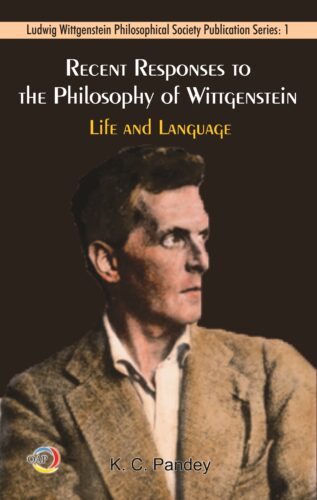

An Introduction to J...
An Introduction to Jain Philosophy
Based on Writings and Discourses by Acharya Sushil Kumar by: Parveen Jain$54.00
ISBN: 9788124609774
Year Of Publication: 2019
Edition: 1st Edition
Pages : xxxv, 354p.
Bibliographic Details : Glossary; Bibliography; Index
Language : English
Binding : Hardcover
Publisher: D.K. Printworld Pvt. Ltd.
Size: 23
Weight: 850
It is well-known that the Jain tradition has been extremely influential in the development of Indian thought and culture. The Jain tradition teaches that there is an interdependence of perception, knowledge, and conduct unified by an axiomatic principle of non-violence in thought, speech, and action. In this way, non-violence defines the core of the Jain tradition, which has had a profound effect on other dharmic traditions originating in India. Jain Dharma is so significant that in some ways it may be incomplete to attempt to understand other Indian traditions (such as Buddhism or Hinduism) without knowing the basics of the Jain tradition, since these other traditions developed in an ongoing dialogue with the insights and wisdom of Jain respondents and visionaries.
This book enables the reader to enjoy a comprehensive journey into the intricate world of Jain thought and culture in a way that is philosophical in its compelling rationality, deeply spiritual in its revelations, yet accessible in its language. The organization of this book allows the reader to engage in an overview of the central teachings of the Jain tradition, but also to ascertain the profundity of its depths. It can be read with equal efficacy in succession from beginning to end, or pursued by individual topics of interest to the reader. Either strategy will have the same effect: a systematic understanding of what the timeless teachings of Jain thinkers have to say about the universal issues of the human condition – and how we might understand our harmonious relationship with other living entities as a powerful and effective spiritual journey.
Acharya Sushil Kumar
Foreword – Dr. Rita Sherma
Prologue – Dr. Jeffery D. Long
Preface
Acknowledgments
Editor’s Note
Scheme of Transliteration
- Characteristics of Jain Dharma (Jain Dharma ka Svarupa)
Wisdom and Ethics Described in the Sthanangasutra
- A Glimpse into the Past (Atita ka Jhalaka)
Lord Rshiabhadeva
Jain Dharma in the Ancient Hindu Upanishads
Jain Dharma in the Medieval Hindu Puranas
Tirthankaras of Jain Dharma
Lord Arishtanemi (Lord Neminatha)
Lord Parshvanatha
Lord Mahavira
Lord Mahavira’s Benevolent Community
Lord Mahavira’s Contributions
Religious Leaders during the Time of Lord Mahavira
Lord Mahavira and Lord Buddha
Mahavira and Buddha: Similarities and Dissimilarities
Similar Inspiration between Buddhist and Jain Doctrines
The Seven Ninhavas and Other Opponents of Lord Mahavira
Divisive Issues
Jain and Vedic Philosophies Supplement Each Other for Completeness
Influence of the Shramana Tradition on Other Religions
Hardships Endured by the Shramana Community
Jain Shramana Proliferation
Lord Mahavira and His Contemporary Society
Supporting the Popular Language of the People
Lord Mahavira’s Message to the World
The Disciple Tradition
- Path to Salvation – Right Perception (Mukti-Marga – Samyag-Darshana)
Right Perception (Samyag-Darshana)
Eight Elements of Samyag-Darshana
- Right Knowledge (Samyag-Jnana)
Genuine versus Spurious Knowledge
Knowledge or Wisdom (Jnana)
Empirical Knowledge (Mati-Jnana)
Scriptural Knowledge (Shruta-Jnana)
Difference between Mati-Jnana and Shruta-Jnana
Authenticity of Shruta
Jain Scriptures and Their Sources
Clairvoyant Knowledge (Avadhi-Jnana)
Mind-Reading Knowledge (Manah-Paryaya-Jnana)
Supreme Knowledge (Kevala-Jnana)
Discussion of Evidence Epistemology (Pramana-Mimamsa)
Alternate Classification of Pramana
- Analysis of the Universe (Vishva ka Vishleshana)
Arrangement of Substance (Dravya-Vyavastha)
Purpose of Analyzing Substance (Dravya Mimamsa ka Uddeshya)
What Are Substances? (Dravyas ki Ruparekha)
Essence of the Universe (Vishva ka Mula)
Constituents of Substance (Dravya Prthakkarana)
Living Substance (Jiva-Dravya)
Non-Living Substances (Ajiva-Dravya)
The Substance That Is the Medium of Motion (Dharma-Dravya)
The Substance That Is the Medium of Rest (Adharma-Dravya)
The Substance That Is Space (Akasha-Dravya)
The Substance That Is Time (Kala-Dravya)
Non-Sentient, Tiny Material Substance (Pudgala-Dravya)
- The Discussion of the Fundamental Truth (Tattva-Carca)
Soul: The Living and Sentient Entity (Jiva)
The Non-Living and Non-Sentient Substance (Ajiva)
The Righteous and Auspicious Karma (Punya)
The Wickedness Demerit That Causes Inauspicious Sinful Karma (Papa)
The Influx of Karma upon the Soul (Ashrava)
The Cessation of the Influx of Karma upon the Soul (Samvara)
The Dissociation of the Soul from Adhered Karmic Matter (Nirjara)
The Bondage of Karma to the Soul (Bandha)
The Ultimate Liberation (Moksha)
- Fundamental Doctrines: Nayavada, Anekantavada, and Syadvada
The Doctrine of Fundamental Principles (Nayavada)
The Essence of Viewpoints: Naya-Svarupa
The Truth behind Naya (Naya ki Satyata)
The Classification of Naya (Naya-Bheda)
Viewpoints That Deal with the Nature of Substances (Dravyarthika-Nayas)
Viewpoints That Deal with Modalities (Paryayarthika-Nayas)
The Doctrine of Non-Absolutism (Anekantavada)
The Doctrine of Qualified Assertion (Syadvada)
The Language Policy (Bhasha-Niti)
Methodology for Systematic Formulation (Nikshepa-Vidhana)
- Jain Psychology (Manovijnana)
Senses (Indriya)
The Objects Perceived by the Senses (Indriyon ke Vishaya)
Mind (Mana)
The Karmic Stains That Obstruct the Jiva (Leshyas)
The Passions and Karmic Bondage (Kashaya)
The Passion of Anger (Krodha-Kashaya)
The Passion of Egoism (Mana-Kashaya)
The Passion of Deception (Maya-Kashaya)
The Passion of Greed (Lobha-Kashaya)
Classification of Karmic Bondage (Bandha)
Bonding due to Anger (Krodha-Kashaya Bandha)
Bonding due to Egoism (Mana-Kashaya Bandha)
Bonding due to Deception (Maya-Kashaya Bandha)
Bonding due to Greed (Lobha-Kashaya Bandha)
- Jain Yoga: Meditation and Union with Divinity
Yoga in Dharmic Traditions
The Evolution of Yoga Practices
Yoga and Jain Dharma
Characteristics of Yoga Practitioners
Yoga of Mind, Body, and Speech
Yoga of the Mind (Mana-Yoga)
Yoga of the Body (Kaya-Yoga)
Yoga of Speech (Vacana-Yoga)
Types of Yoga
Spiritual Yoga (Adhyatma-Yoga)
Five States of Mind
The Five Mental Anguishes (Klesha)
The Eight Constituents of Jain Yoga (Ashtanga-Yoga)
The Supreme Vows (Mahavrata)
The Principles of Yoga (Yoga-Samgraha)
The Bodily Deficiencies (Kaya-Klesha)
Breathing Exercise with Restrained Thoughts (Bhava-Pranayama)
Withdrawing Within (Prati-Sanlinata)
Firm Concentration (Dharana)
Focused Contemplation or Meditation (Dhyana)
Deep Meditation (Samadhi)
The Practice of Yogic Meditation (Dhyana-Yoga Sadhana)
Jain Yoga and Hatha-Yoga
Yoga, Meditation, and Penance: Three Connected Spiritual Practices
- Spiritual Progression (Adhyatmika Utkranti)
Fourteen Virtuous Stages
Stages of Alienation from One’s Soul (Bahiratma)
Internalized Stages Towards One’s Soul (Antaratma)
Paramatma Stages: The Soul at Its Highest
- Doctrine of Karma (Karmavada)
Classifications of Karmas
Knowledge-Inhibiting Karma (Jnanavaraniya-Karma)
Perception- or Awareness-Inhibiting Karma (Darshanavaraniya-Karma)
Hindrance-Causing Karma (Antaraya-Karma)
Delusion-Causing Karma (Mohaniya-Karma)
Karma That Causes Physical Experiences (Vedaniya-Karma)
Lifespan-Affecting Karma (Ayu- or Ayushya-Karma)
Designation of the Jiva Body-Type Karma (Nama-Karma)
Clan of Birth Karma (Gotra-Karma)
States of Karma
Benefits of Karma Shedding (Karma-kashaya)
The Process of Transmigration (Punarjanma)
- Right Conduct and Doctrine of Ethics (Samyag-Caritra and Nitishastra)
Right Conduct (Samyag-Caritra) and Its Importance
The Discussion on Vows (Vrata)
Basic Vices (Doshas)
Non-Violence (Ahimsa)
The Foundation of Right Conduct
Two Kinds of Dharma: Householders and Ascetics
Householder Ethics (Grihastha-Dharma)
Precepts of a Jain Householder
Minor Vows for Householder Living (Anuvrata)
Supplementary Guidelines for Household Living
Shravaka and Shravika Types of Jain Householder
Ethical Living of Householders (Shravaka-Shravika Jivana-Niti)
Social Demeanor
Jain Householder Etiquette
- The Virtues of Jain Mendicants (Nirgrantha Dharma)
Renunciation (Tyaga)
The Five Supreme Vows for Ascetics (Mahavratas)
Five Behavioral Constraints (Samitis)
Protective Measures for the Mind and Senses (Gupti)
Prohibitions (Anacirna)
Twelve Reflective Contemplations (Dvadasha Bhavana)
Four Contemplations for Character Building (Cara Bhavana)
Ten Principles of Dharma (Dasha-Vidhi-Dharma)
Types of Spiritual Mendicants (Nirgranthas)
Spiritual Perseverance of a Mendicant (Sadhana)
The Rigor of Spiritual Perseverance (Sadhana ki Kathorata)
The Basis for Rigorous Spiritual Perseverance (Sadhana ka Adhara)
Six Obligatory Duties (Avashyaka Kriyas)
The Art of Dying (Sallekhana Vrata)
- The Lineage of Jain Dharma (Jain Dharma ki Parampara)
Contributions by Jain Acharyas in the Spiritual Evolution of India
Contributions by Kings and Rulers
King Cetaka and Other Rulers
Kings Shrenika and Kunika
Emperor Candragupta Maurya
Emperor Ashoka
Emperor Samprati
Kharavela, Emperor of Kalinga
King Kalabhravamshi and Kalacuri Dynasty
Kings of Hoyashala Dynasty
Kings of Ganga Dynasty
Camundaraya
King Shivakoti
King Amane
The Supreme Arhata (Paramarhata) Kumarapala
Rulers of the Rashtrakuta Dynasty and Amoghavarsha
Vanaraja Cavada and King Calukya
Siddharaja Jayasimha
Ministers and Generals
Growth of Jain Religion
- Summary of the Distinct Merits of Jain Dharma
Appendix: Jain Mantras
The Art and Science behind Mantra Formulation
Namokara (Namaskara) Mahamantra
Mangala-Patha (Cattari Mangalam)
Kshamapana-Sutra (Forgiveness Couplet)
Rishi-Mandala Mantra
Sarasvati Mahamantra
Mahalakshmi Mantra
Pratikramanasutra
Logassasutra – Caturvimshit Prayer
Guru-Vandana
Lord Shantinatha Mantra
Simple Recitations for Meditation
Glossary of Terms
Bibliography
Index








There are no reviews yet.